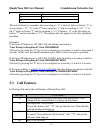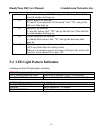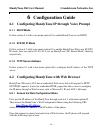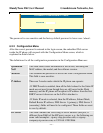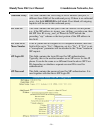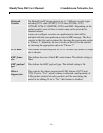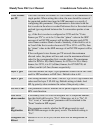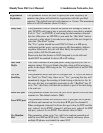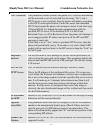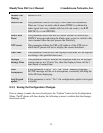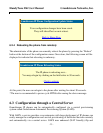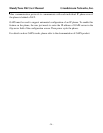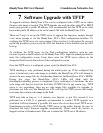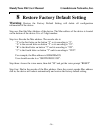
HandyTone 286 User Manual Grandstream Networks, Inc.
- 21 -
NAT Traversal
This parameter defines whether the phone NAT traversal mechanism
will be activated or not. If activated (by choosing “Yes”) and a
STUN server is also specified, then the phone will behave according
to the STUN client specification. Under this mode, the embedded
STUN client inside the phone will attempt to detect if and what type
of firewall/NAT it is behind through communication with the
specified STUN server. If the detected NAT is a Full Cone,
Restricted Cone, or a Port-Restricted Cone, the phone will attempt to
use its mapped public IP address and port in all the SIP and SDP
messages it sends out.
If this field is set to “Yes” with no specified STUN server, then the
phone will periodically (every 10 seconds or so) send a blank UDP
packet (with no payload data) to the SIP server to keep the “hole” on
the NAT open.
keep-alive
interval
The HT286 sends a UDP package to the SIP server periodically in
order to keep the port open on the router. This parameter defines the
interval time that HT286 send the UDP package. The default setting
is 20 second.
Use NAT IP
NAT IP address used in SIP/SDP message. Default is blank.
TFTP Server
This is the IP address of the configured tftp server. If it is non-zero
or not blank, the IP phone will attempt to retrieve new configuration
file or new code image (update) from the specified tftp server at boot
time. It will make up to 3 attempts before timeout and then it will
start the boot process using the existing code image in the Flash
memory. If a tftp server is configured and a new code image is
retrieved, the new downloaded image will be verified and then saved
into the Flash memory.
SUBSCRIBE
f
or MWI
Default is NO. When set to Yes a SUBSCRIBE for Message Waiting
Indication will be sent periodically
Offhook
Auto-Dial
This parameter allows the user to configure a User ID or extension
number to be automatically dialed upon offhook. Please note that
only the user part of a SIP address needs to be entered here. The
phone will automatically append the “@” and the host portion of the
corresponding SIP address.
Enable Call
Feature
Default is No. If set to Yes, Call Forwarding & Do-Not-Disturb are
supported locally.




